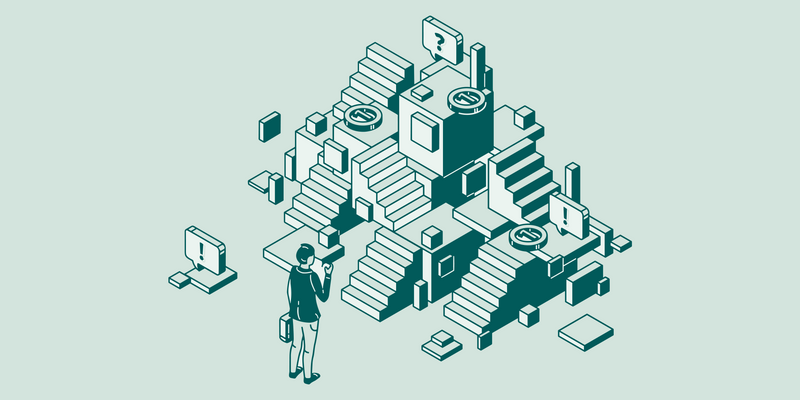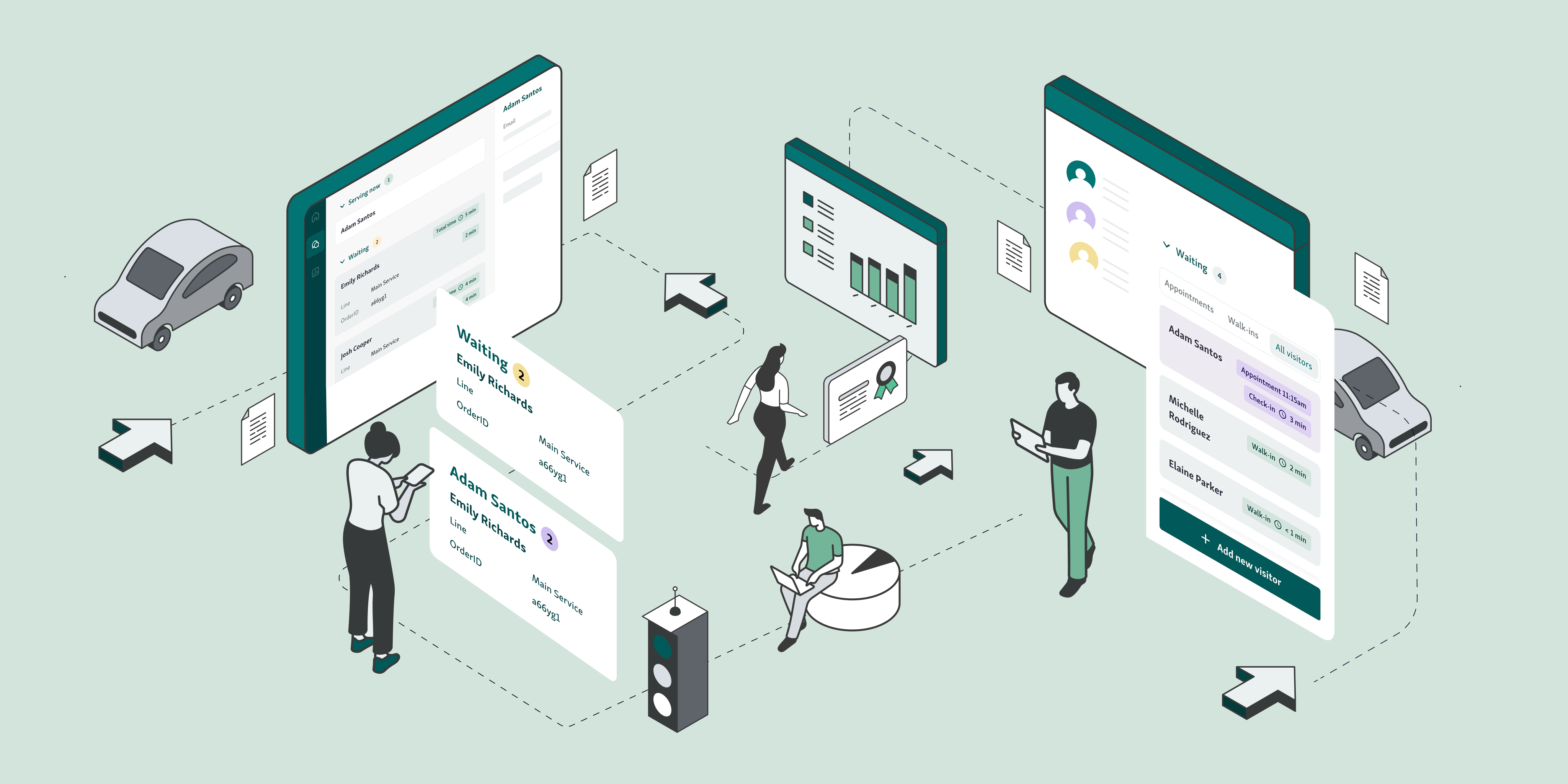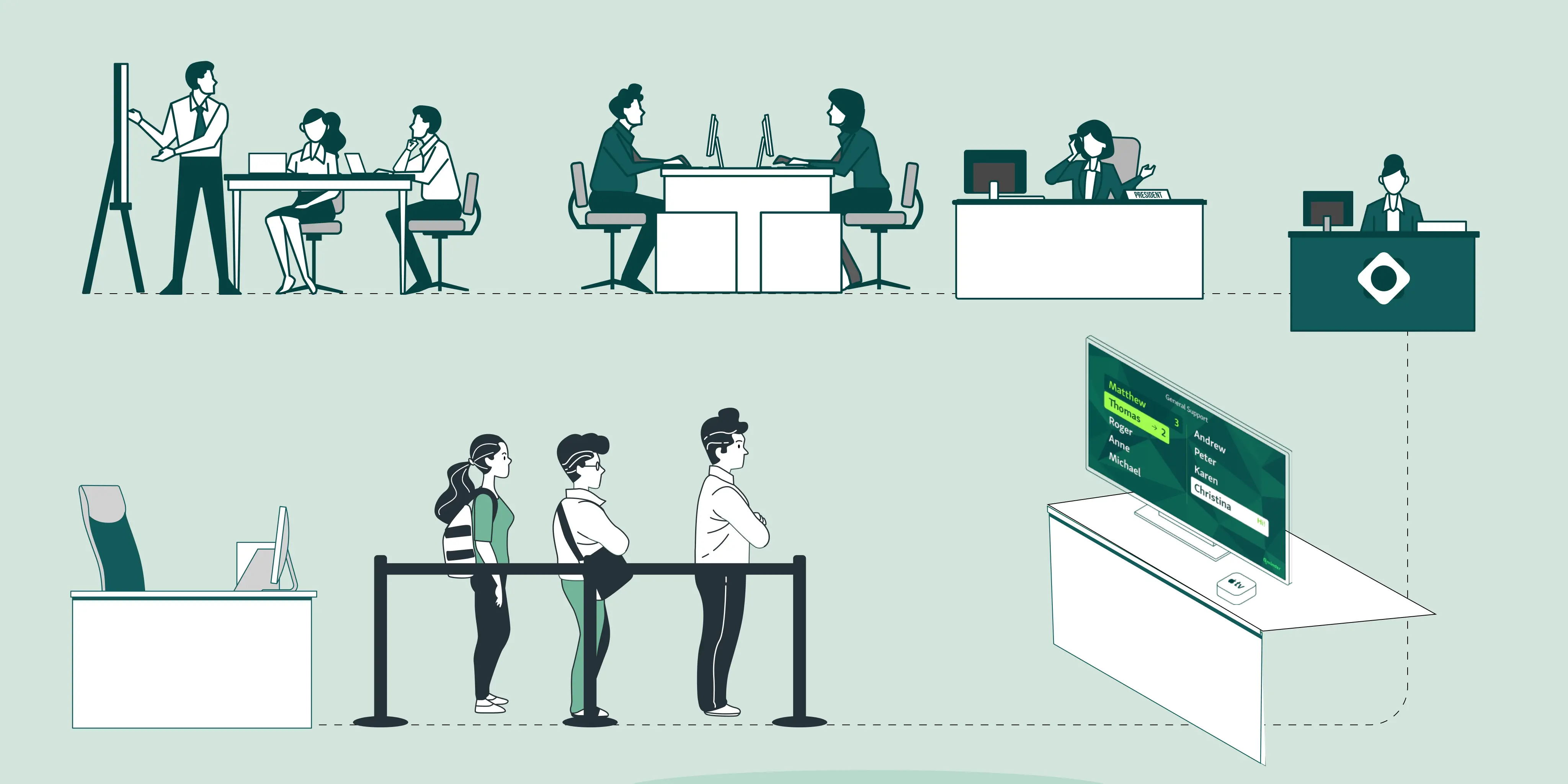Self check-in kiosks are touchscreen devices that let citizens independently register their arrival, confirm appointments, or access services without staff assistance. More local government agencies are adopting these systems to reduce lobby congestion, speed up service, and create smoother experiences for citizens.
According to recent data, the global self-service kiosk market was valued at $32.51 billion in 2024 and is projected to grow to $56.01 billion by 2033, reflecting strong demand for more efficient public service tools.
These kiosks support features like multilingual interfaces, accessibility options, and real-time updates that ease pressure on frontline staff.
In this blog, we’ll explore what self check-in kiosks are, their benefits, and how they improve service efficiency in local government.
What Are Self Check-in Kiosks?
Self check-in kiosks are digital touchpoints, typically touchscreen devices, that allow visitors to check themselves in upon arrival, without needing direct staff interaction. These tools are increasingly used in local government offices to reduce congestion at service counters, cut wait times, and improve overall service efficiency.

Key features include:
Touchscreen interface: Intuitive and user-friendly layout that guides citizens through the check-in process with minimal assistance.
Form entry and document scanning: Enables visitors to fill out required information, upload necessary documents, and verify identification directly at the kiosk.
Appointment verification: Confirms scheduled appointments or seamlessly adds walk-ins to a digital queue for same-day service.
Common types of kiosks:
Freestanding units: Durable and designed for high-traffic lobbies or reception areas in government buildings.
Wall-mounted models: Great for offices with limited space, while still offering full functionality.
Tablet-based setups: Lightweight and mobile, often used in satellite locations or during temporary events.
ADA-compliant versions: Built with accessibility in mind, featuring adjustable screen angles and height for wheelchair users and others with mobility needs.
Why Local Governments Are Turning to Self-Service
As expectations rise and budgets tighten, local governments are embracing self check-in kiosks to streamline operations and meet the growing demands of the public.
Rising foot traffic and staffing limitations
Public offices are seeing more citizens walk through the door, while staff numbers often remain the same—or decline. Self service check in kiosks help absorb repetitive administrative tasks like sign-ins or form submissions, freeing up employees to focus on complex service needs and reducing burnout.
Demand for faster, more transparent public services
Citizens increasingly expect the same speed and clarity they experience in private-sector services. Kiosks empower visitors to check in, verify appointments, and see their place in line—leading to less confusion, fewer complaints, and a more modern experience.
Need for better resource allocation and real-time data
Self check-in systems produce valuable data on visitor volume, peak times, and service trends. This real-time insight allows managers to dynamically adjust staffing, reduce bottlenecks, and plan more effectively for high-demand periods.
Benefits of Self Check in Kiosks
Self-service check-in kiosks offer a range of operational and customer experience improvements for local government offices. Here are some of the benefits of self check in kiosks:
1. Reduced Front Desk Workload
Self check-in kiosks automate repetitive administrative tasks such as greeting visitors, verifying appointments, and collecting initial information. This significantly reduces the burden on front desk staff, allowing them to focus on more complex interactions, support tasks, or cases that require human judgment. In government offices where staffing is often limited, this creates breathing room and increases overall service efficiency.
Automates basic intake processes
Reduces face-to-face interruptions for administrative staff
Frees up resources for case handling, guidance, or escalations
Supports lean staffing models without reducing service quality
Example: A municipal housing department implemented self service check in kiosks and reduced front desk congestion by 40%, allowing staff to dedicate more time to vulnerable citizens needing urgent assistance.
2. Faster Service Times
By enabling visitors to check themselves in without needing to wait for staff interaction, kiosks shorten the initial entry process. This helps agencies process more people in less time, keeps queues moving smoothly, and reduces the average time a visitor spends waiting. The streamlined flow also improves punctuality and ensures departments stay on schedule throughout the day.
Eliminates bottlenecks at the front desk
Accelerates entry for both walk-ins and appointments
Helps manage high foot traffic during peak hours
Speeds up triage and routing to the right department
Example: A DMV office reduced average check-in times from 4 minutes to under 1 minute by replacing manual sign-in sheets with self-service kiosks, cutting total visitor time on site by 20%.
3. Improved Data Accuracy
When citizens input their own details through a kiosk interface, it reduces the chance of human error during intake. Whether it’s spelling their name, choosing the right service category, or entering contact details, self-service entries tend to be more accurate and current. This improves downstream processes like documentation, communication, and case follow-ups.
Reduces transcription or clerical errors
Increases completeness and accuracy of records
Supports standardized data collection for reporting
Minimizes back-and-forth clarifications
Example: A public health office saw a 30% drop in intake form errors after deploying kiosks with guided data entry prompts, which also improved appointment confirmations and follow-up rates.
4. Better Visitor Flow Management
Self service check in kiosks can be integrated with queue management systems to direct citizens to the correct service area, counter, or department. This minimizes confusion, keeps lobbies orderly, and ensures a more predictable flow of people through the facility. It also gives staff visibility into who's waiting and why, allowing them to respond more efficiently.
Routes visitors based on selected service
Automatically updates queue dashboards for staff
Reduces misdirected traffic and idle time
Optimizes use of waiting space and seating
Example: A city licensing bureau integrated kiosks with its digital queuing system and reduced misrouted visitors by 50%, significantly improving throughput and wait-time predictability.
Helpful Read - How Improving Citizen Flow Can Deliver Measurable ROI for Local Governments
5. Enhanced Citizen Experience
Self-service technology empowers citizens by giving them more control over their visit. With features like real-time updates, service descriptions, and multilingual support, visitors feel more informed and less anxious. This improves perceptions of fairness and transparency, both of which are critical to building public trust.
Multilingual options support diverse communities
Real-time status reduces uncertainty and frustration
User-friendly design supports quick, confident check-ins
Improves transparency in service delivery
Example: A community services office in a bilingual city saw a 25% boost in satisfaction scores among non-English speakers after implementing kiosks with five language options.
24/7 Check-in Capability (Where Applicable)
In agencies offering extended or after-hours services, kiosks allow people to check in or submit documents outside of traditional working hours. This is especially helpful in locations with limited reception coverage or where early morning/late evening visits are common, such as public safety offices or drop-off points.
Supports unattended check-in for late or early visits
Enables secure drop-off for documents or forms
Reduces morning bottlenecks by allowing pre-check-in
Expands service window without increasing staffing
Example: A municipal social services center used kiosks to accept form submissions after 5 p.m., helping citizens with inflexible schedules and reducing lines during regular hours.
7. Improved Accessibility
Modern self check-in kiosks are designed with inclusivity in mind. ADA-compliant models offer tactile buttons, screen readers, audio prompts, and adjustable screens to ensure that people with visual, auditory, or mobility impairments can interact with the technology independently and with confidence.
ADA-compliant hardware supports equal access
Audio and visual guidance assist users with disabilities
Interfaces designed for screen readers and switch devices
Height-adjustable or tiltable screens for wheelchair users
Example: A county courthouse installed ADA-compliant kiosks with audio prompts and large-format screens, making check-in easier for seniors and visually impaired visitors.
Helpful read - How Investing in Self-Service Kiosks Helps Queuing
How Self Check-in Kiosks Work (Step-by-Step Walkthrough)
Qminder makes it easy for public sector agencies to replace manual front-desk sign-ins with a modern, self-service kiosk setup. Using a simple Apple iPad and the Qminder app, government offices can automate check-ins, reduce lobby congestion, and deliver more personalized customer service. Here's how it works:
Step 1: Set Up the iPad Kiosk
-
Download the Qminder app from the App Store and install it on a compatible iPad.
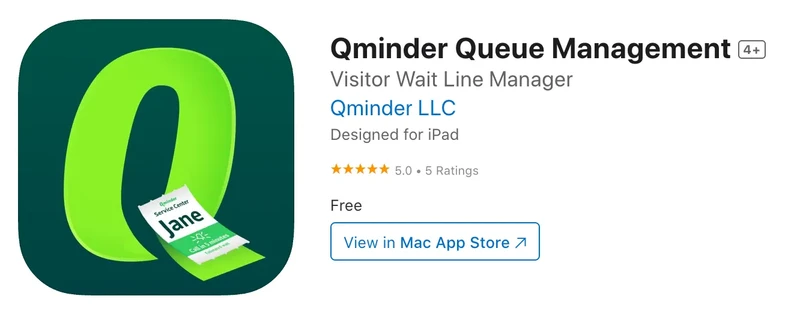
Mount the iPad securely using a sturdy, ADA-compliant stand near the entrance or at key locations.
Configure the app to display your specific service lines and any custom questions you want to collect during check-in.
Tip: Outside operating hours, the iPad will display a “closed” message, preventing accidental check-ins.
Step 2: Visitor Initiates Check-In
When a citizen arrives, they simply tap the iPad screen to begin.
The experience is intuitive and available in multiple languages, ensuring accessibility for diverse communities.

Step 3: Service Selection
Visitors are prompted to choose the reason for their visit from a list of customizable service categories (e.g., permits, tax help, social services).
Each category helps route them to the correct department or queue automatically.
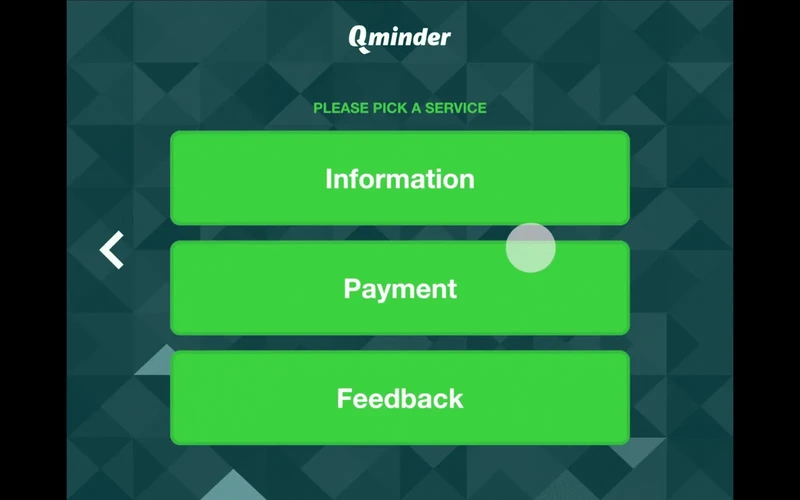
Step 4: Enter Personal Details
Citizens input basic information such as:
First name
Phone number (for SMS notifications)
Email (optional, for digital receipts or follow-up)
Preferred language
Birthdate or other custom questions set by the agency

This data allows staff to prepare in advance, delivering more informed and efficient service.
Step 5: Automatic Queue Placement
Once the form is complete, the visitor is automatically added to the digital queue.

Staff can see the visitor’s name, reason for visit, and other key info through Qminder’s Service View dashboard.
The visitor waits comfortably while their spot in line is maintained—and they can receive updates via SMS.
Learn more - Configure the iPad self-check-in kiosk
Considerations Before Implementation
Before deploying self check-in kiosks in local government offices, agencies should assess several key factors to ensure smooth rollout and long-term effectiveness:
1. Hardware and installation costs
Setting up self check-in kiosks requires a thoughtful investment in reliable hardware—such as tablets (typically iPads), secure stands, mounts, and power access. Costs will vary depending on the number of kiosks, size of the facility, and any additional equipment like printers or signage. Planning ahead helps avoid overspending or under-serving high-traffic areas.
2. Software compatibility and integration
Kiosk software should integrate seamlessly with your current systems, whether it's an appointment scheduling tool, queue management system, or citizen database. Look for platforms that are API-friendly and cloud-based, ensuring that future upgrades or changes don’t require complex redevelopment or replacements.
3. Accessibility compliance
ADA compliance isn't optional for government services. Choose kiosks that support screen readers, adjustable text sizes, tactile input options, and wheelchair-friendly placement. Multilingual support is also important in diverse communities, helping ensure everyone can use the kiosks independently.
4. Staff onboarding and citizen education
Introducing a self-service option doesn’t eliminate the need for human support. Staff should be trained to guide first-time users and troubleshoot common issues. Meanwhile, clear on-screen instructions, signage, or even short videos can help citizens feel confident using the new system without assistance.
5. Data privacy and cybersecurity
Handling citizen data demands high levels of security. Kiosk systems should use encrypted data transmission, secure cloud storage, and access controls. Ensure the solution complies with relevant data protection laws and has built-in protocols to handle sensitive information safely.
Bringing Efficiency to the Front Door
Self check-in kiosks are more than just digital sign-in points—they’re a strategic investment in better service delivery. By streamlining arrival, reducing manual work, and improving data accuracy, they help local governments serve citizens faster and more efficiently.
When paired with queue management systems, kiosks can transform the flow of public spaces, making the waiting room experience more organized and less frustrating for everyone.
Qminder offers an intuitive iPad-based kiosk solution that integrates seamlessly with digital waitlists and staff dashboards. Ready to modernize your front desk?
Try Qminder and see how self check-in can simplify your service flow.
Yes, many self check-in kiosks can be configured to gather post-service feedback. After check-in or service completion, visitors can be prompted to rate their experience or answer short surveys. This provides valuable insights into service quality and citizen satisfaction without requiring additional staff effort.
Most kiosk setups include an option for visitors to request help during the sign-in process. This could be a visible “Need Help?” button or alert sent to nearby staff. The goal is to ensure the self-service option doesn’t exclude those who may be unfamiliar with technology or require additional support.
Absolutely. Kiosk interfaces can be tailored to display specific service lines, questions, and instructions depending on the department or location. This ensures relevance and clarity for users, while helping staff collect the right information upfront.

